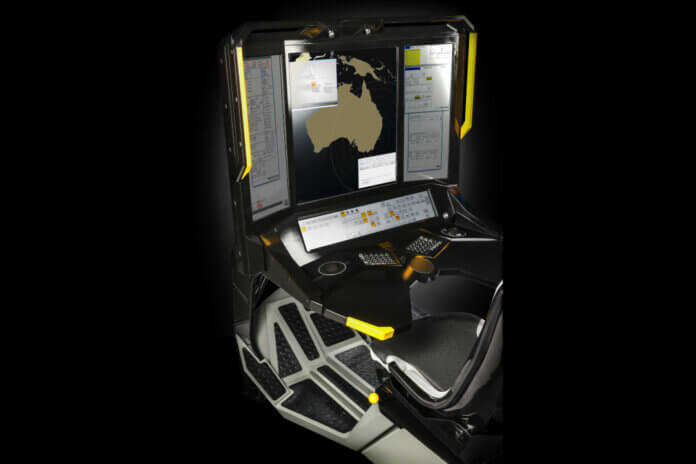
Saab has revealed design details for a new warship ‘ops room’ operator console set-up. The ‘future operator workspace’ concept integrates the operator and the technology to enhance use of the increased data flowing into the ‘ops room’ and enable faster decision making.
The company will display the concept at the Defence and Security Equipment International (DSEI) 2023 exhibition, taking place at ExCel London on 12-15 September.
The concept presents “a revolutionary combat console,” Johan Hagg, Saab’s project manager for the company’s 9LV combat management system (CMS) solutions, told a media briefing on 5 September.
Developed with input from operators for the requirement and from university academics for the modelling, the concept is designed to push the human-machine interface to provide improved ergonomics, functionality, cognitive focus, and intuitive use for the operator, said Hagg.
The focus within both the new concept and Saab’s wider CMS-related capability development is “[to give] the operator the best opportunity to solve the tactical problems”, Hagg explained.
“We see that navies are trying to deliver capability with smaller crews … [and] are trying to maximise the output of the personnel available,” Hagg said. “The crews face a larger amount of tasks, threats, and data that they have to take care of.” “We have to help them to accelerate the decision loop,” he added.
Here, the integrated workspace concept has the operator embedded within the system to improve efficiency in using systems and data to enhance combat effectiveness. “We need to ensure that the information needed for the task at hand is presented precisely,” said Hagg. “The prime driver is that you should be able to control the things you have onboard in the best way, both in low readiness and at the highest readiness.”
Central to the design is the integration of the consoles, controls, and operator’s chair into a single unit, to reduce footprint. Three screens are used – including a large, high-resolution, main tactical display – to enhance presentation of the increased data coming onboard. Controls include two track balls, a split keyboard, touchscreen capability, and a moveable touchpad. The set-up includes an interface with Saab’s TactiCall integrated communications system, plus other customisable interface options.
The workspace, which can be built from composite materials or aluminium, is set on a shock mounting to enhance survivability.
Future development options for the chair could include integrating micro-speakers (to improve audio communication) or providing vibrations (to indicate a threat emerging on the screen), said Hagg.
As regards ‘ops room’ lay-out, positioning two workspaces before a large screen, for example, would enable the operators to feed in and control the information required on the screen, Haag explained.
Workspace concept development began two years ago, with joint work conducted by Saab teams in Sweden and Australia. Initial planning lasted 12 months, leading into an eight-month period of further development, design, and build of two prototype set-ups. One will be displayed at DSEI; the other remains with the Saab Australia team, and will be displayed at the Indo-Pacific 2023 International Maritime Exposition, in Sydney in November. To date, funding has come wholly from Saab’s research and development budget.
Saab is seeking further operator feedback, prior to moving to build of a productionised variant over the next two years, Hagg explained. “We have to agree on the common requirements, make some materiel choices, and look at the commercial aspects of building it,” he added.
The concept provides a baseline design, adaptable to customer requirements, for fits to surface ships or submarines. The intention is to develop a design and product that can be manufactured and supported in different countries, said Hagg.
by Dr. Lee Willett













